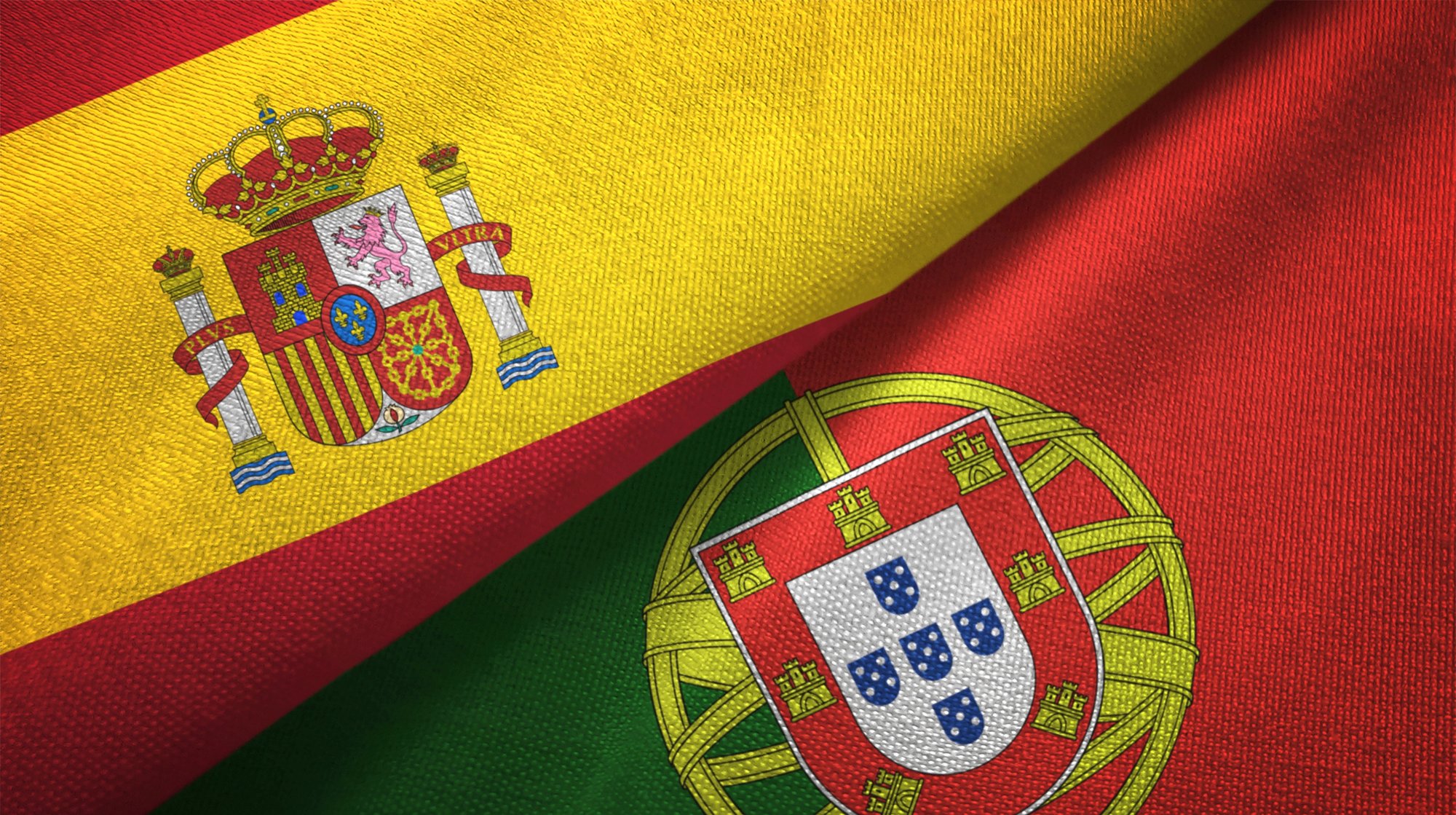On July 27, 2025, the European Union and the United States announced a landmark trade agreement. Under this deal, the U.S. will impose a 15% tariff on most EU exports, half of the previously threatened 30%, in an effort to avoid a full-blown trade war. In return, the EU has committed to investing approximately $600 billion into the U.S. economy and purchasing up to $750 billion in U.S. energy over the coming years. As transatlantic relations enter a more predictable phase, it is a good moment to examine Portugal’s role in global trade, especially its most important trading partners and the types of goods it imports and exports.
Spain is #1
Portugal, as an EU member state, is deeply embedded in the European single market, which enables the free movement of goods and services across member nations. However, Portugal’s trade relationships extend far beyond Europe. They reach into North and South America, Asia, and Africa. Understanding the balance of these relationships sheds light on both Portugal’s economic resilience and its vulnerabilities.
When it comes to exports, Spain is by far Portugal’s largest trading partner and currently receives about one-quarter of all Portuguese exports. This is followed by Germany, which accounts for roughly 12 to 13 percent of exports, and then France at about 6 to 7 percent. The United States also plays a significant role, receiving around 6 percent of Portugal’s exports, while the Netherlands comes close behind at approximately 5 percent. Spain’s dominance in this space is largely attributed to geographic proximity and close economic ties, while Germany and France are major recipients of Portuguese automotive components, machinery, and industrial products. The United States is an important destination for specialized goods, including cork, textiles, and agricultural products.
On the import side, Spain once again leads the way, supplying more than 32 percent of Portugal’s imported goods. Germany is the next largest source, contributing around 11 percent, followed by France at approximately 6 percent. China is also a key player, making up about 5 percent of Portuguese imports, particularly in electronics, textiles, and machinery. The Netherlands, with its highly developed logistics and port infrastructure, rounds out the top five. Portugal’s high import figures from EU countries reflect the ease of trade within the single market, but China’s role has grown steadily, especially in sectors involving consumer electronics and raw materials.

The strength of these trade relationships can be explained by several key factors. Portugal’s membership in the EU enables smooth and tariff-free trade with its neighbors. Geography plays a crucial role, as does economic complementarity. Portugal imports many of the raw materials, machinery, and fuel it needs to support domestic production and exports goods that other EU nations and global partners require. Additionally, Portugal has carved out successful niches in areas like cork, wine, textiles, and auto parts, which are in demand in both established and emerging markets.
What Are Portugal’s Biggest Imports and Exports?
Looking more closely at the types of goods Portugal trades, we see that the country exported around $83 billion worth of goods in 2024. This marked a 2.5 percent increase from the previous year. These exports cover a wide range of sectors, but consumer goods make up the largest share, accounting for nearly half of all goods sent abroad. These include food and beverages, textiles, footwear, and household items. Intermediate goods, such as industrial machinery parts and chemical products, represent about a quarter of exports, while raw materials like metals and refined fuels account for a smaller but still significant portion.
Exports
In terms of specific export products, refined petroleum oils and related preparations consistently rank at the top. Liquefied natural gas is another major export, especially as Portugal continues to develop its energy infrastructure and port capabilities. Automobiles and automotive components are a central feature of Portugal’s industrial output, with German carmakers in particular sourcing parts from Portuguese factories. Electricity exports have also grown in recent years as Portugal invests more in renewable energy. Rounding out the list are pharmaceuticals, paper goods, and cork, an iconic Portuguese product with worldwide demand.

Imports
On the import side, Portugal brought in around $107 billion worth of goods in 2024, up 1.9 percent from the previous year. Like its exports, Portugal’s imports cover a diverse range. Consumer goods make up about 36 percent of the total, including electronics, vehicles, clothing, and household appliances. Intermediate goods account for roughly 26 percent, consisting of things like machinery, chemicals, and plastics. Meanwhile, raw materials and energy products (including crude oil and natural gas) represent about 15 to 17 percent of imports. Portugal is highly dependent on imported energy, and recent geopolitical instability has made energy security a top concern for policymakers.
Among the top imported products, energy resources lead the way. Crude and refined petroleum, along with liquefied natural gas, are imported from a variety of sources including Spain, Algeria, and the United States. Vehicles and vehicle components make up another large share of imports, reflecting both domestic consumption and the country’s role in automobile assembly. Other key imports include machinery, computer hardware, pharmaceuticals, textiles, and chemical products. Imports from China have increased over the past decade, especially in areas like consumer electronics, textiles, and basic industrial equipment.
Taken together, these figures reveal that Portugal consistently runs a trade deficit in goods. In 2024, the country exported about €79.3 billion while importing approximately €107.2 billion. This resulted in a trade deficit of roughly €27.9 billion. While such a deficit might raise alarm bells in some countries, Portugal offsets this imbalance to some degree through its surplus in services, especially tourism, which remains a vital pillar of the economy.
There are reasons for cautious optimism. Export growth outpaced import growth in 2024, which may indicate an improving trajectory. Additionally, the government has invested in developing new export markets and in expanding sectors like renewable energy, high technology, and pharmaceuticals, all of which have the potential to increase the value of Portugal’s exports and reduce its dependency on imported fossil fuels.
How the July 27, 2025 EU-US Tariff Deal Could Impact Portugal
The recent tariff agreement between the EU and the United States could have important implications for Portugal. Since Portuguese goods are exported under the EU’s collective trade agreements, any tariffs imposed by the United States on EU exports will also affect Portuguese products. The new 15 percent tariff rate could impact Portuguese exporters in industries such as automotive components, semiconductors, wine, cork, and pharmaceuticals. Whether certain categories receive special exemptions remains to be seen, but initial reactions suggest that Portuguese exporters are preparing for increased costs and potentially reduced competitiveness in the U.S. market.
On the import side, Portugal might benefit. The agreement did not include reciprocal tariffs from the EU, meaning that U.S. goods entering the European market, including Portugal, may now be relatively cheaper than European competitors. This could influence Portuguese importers who rely on American products, particularly in the fields of energy, aerospace, and high-tech machinery. The agreement also commits the EU to increasing its purchases of U.S. energy, which could help Portugal diversify its energy sources and reduce dependency on volatile markets.
The Portuguese government has responded with cautious support. If the agreement holds, it could stabilize transatlantic commerce and encourage Portugal to deepen trade ties with non-EU markets as well. Still, the risk of disruption remains. The deal is set to be formally reviewed in early August, and any sign of backpedaling by either party could reignite tensions. For Portugal, which depends heavily on open markets, especially within the EU framework, any external shocks could ripple through its export-heavy industries. The ongoing goal for Portuguese economic strategy will be to reinforce trade diversity. Portugal needs to maintain strong EU ties and expand access to markets in North America, South America, Africa, and Asia.
Conclusion
Portugal’s trade landscape reflects a nation deeply connected to its neighbors yet increasingly global in outlook. With Spain, Germany, and France dominating its export and import flows, Portugal is a quintessential European economy. However, its relationships with the United States, China, and other global players continue to grow in importance, especially in sectors like energy, tech, and consumer goods.
The country exports a rich mix of products including refined fuels and auto parts to cork, wine, and textiles and imports vast quantities of machinery, chemicals, energy, and electronics. Trade deficits in goods are a structural feature of the Portuguese economy, but rising exports and a robust services sector provide balance.
The EU-U.S. tariff deal of July 2025 may raise challenges for Portuguese exporters, but it also offers opportunities through energy diversification and reduced trade uncertainty. As Portugal adapts to this new trade environment, it remains a country defined by its openness, adaptability, and the strategic value of its place within Europe and beyond.


